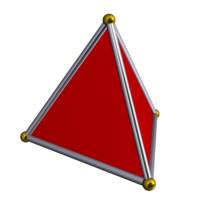
Photo from wikipedia
PURPOSE Computed tomography (CT) scanning over limited-angular ranges (LARs) is of practical interest in possible reduction of imaging dose and time and in design of non-standard scans. This work aims… Click to show full abstract
PURPOSE Computed tomography (CT) scanning over limited-angular ranges (LARs) is of practical interest in possible reduction of imaging dose and time and in design of non-standard scans. This work aims to investigate image reconstruction for two non-overlapping arcs of LARs, and to demonstrate that they may allow more accurate image reconstruction than may a single arc of LAR. METHODS We consider a configuration with two non-overlapping arcs of LARs α1 and α2 , whose centers are separated by 90°, and refer to it as a two-orthogonal-arc configuration. Data are generated from a chest phantom with two-orthogonal-arc configurations over total angular coverage ατ = α1 + α2 ranging from 18° to 180°, and images are reconstructed subsequently by use of the directional-total-variation (DTV) algorithm. For comparison, we also consider image reconstruction for a single-arc configuration of angular range ατ . Quantitative metrics such as the normalized root-mean-square-error (nRMSE) are used for evaluation of image reconstruction accuracy. RESULTS Visual inspection and quantitative analysis of images reconstructed reveal that a two-orthogonal-arc configuration generally yields more accurate image reconstruction than does its single-arc counterpart. As total angular range ατ increases, the DTV algorithm yields image reconstruction with enhanced accuracy, as expected. Also, if ατ remains constant, the two-orthogonal-arc configuration with α1 = α2 generally leads to image reconstruction more accurate than those of two-orthogonal-arc configurations with α1 ≠ α2 , as the nRMSE of the former can be lower than that of the latter for up to more than one order of magnitude. CONCLUSIONS Appropriately designed two-orthogonal-arc configurations may be exploited for improving image-reconstruction accuracy in CT imaging with reduced angular coverage. This study may yield insights into the design of innovative CT scans for lowering scan time and radiation dose, and/or for avoiding scan collision in, e.g., C-arm CT.
Journal Title: Medical physics
Year Published: 2022
Link to full text (if available)
Share on Social Media: Sign Up to like & get
recommendations!